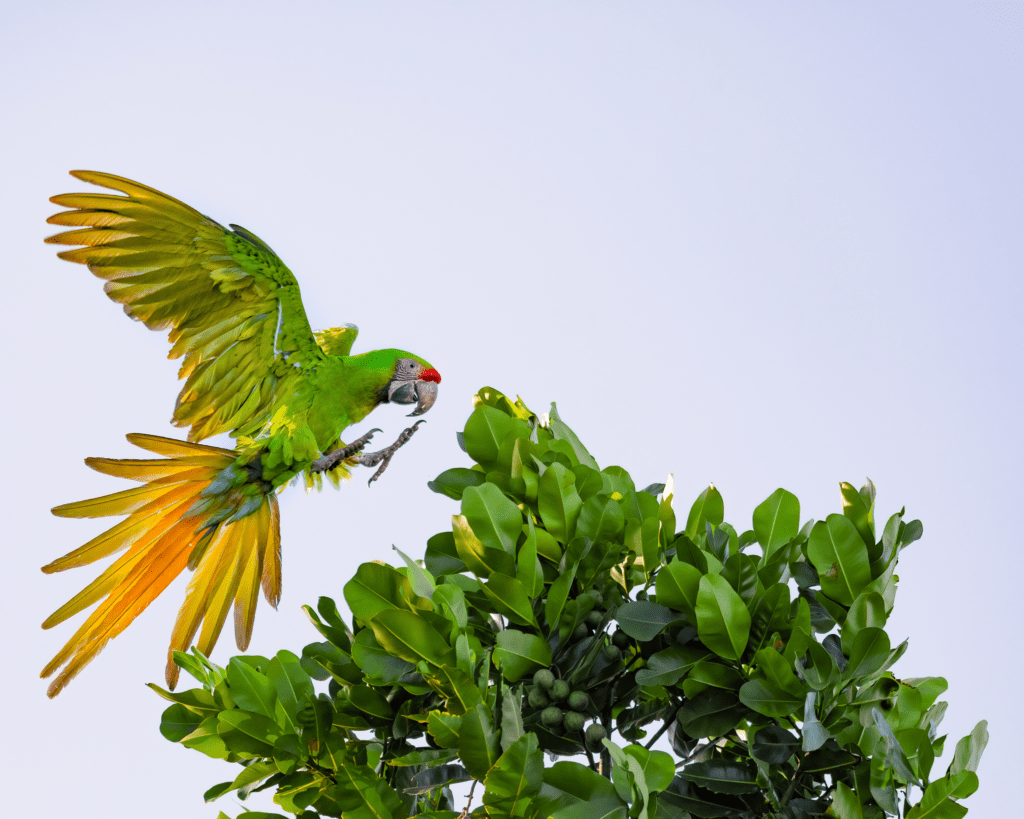The Macaw Recovery Network’s mission is to protect and recover endangered parrot populations in the Americas, working towards a future in which parrots and their ecosystems thrive and coexist with local communities.
At Punta Islita on the south coast of Costa Rica, efforts to boost and monitor wild macaw populations, preserve habitat and connect with communities continue. Efforts include:
- Gaining an estimate of macaw numbers in Costa Rica
- Completing surveys to locate roosts and discover how and where the birds travel
- Employing technology that has been installed through 5,000 km2 of the country’s northern zone, to detect the macaws’ presence
- Collaborating with university students to monitor wild nests, and health-check and fit radio-tracking collars to chicks
- Engaging local women to identify, collect and propagate the seeds of trees important to the macaws
- Aiming to plant a total of 6000 over two years, with 1520 trees planted to date
MRN staff and university students also join forces to complete critical work. This year a student and two volunteer biologists are monitoring wild nests, health-checking and genetic sampling the chicks and fitting them with radio collars.
Engaging communities benefits both people and Great Greens – local women are being trained to identify, collect and propagate the seeds of trees important to the macaws. The Women Rangers Program in Boca Tapada, Alajuela was founded in 2020. A nursery, “Casa del Titor,” which the women manage, currently houses 4,000 plants comprising 43 different plant species. The group has learned to record and monitor the progress of these plants and the weather and coordinate monthly trips out into the wilderness to collect more seeds to bring to the nursery. The team has, to date, planted 1,520 trees and aims to plant a total of 6,000 within the next two years.
Status: IUCN Critically Endangered / CITES Appendix I
Population: 500-1000 mature individuals.
Range: A.a. ambiguus: Caribbean lowlands of E Honduras to NW Colombia. A.a. guayaquilensis: W Ecuador, Esmeraldas; smaller numbers in the Cordillera de Chongon-Colonche, Guayas.
Natural history: The Great Green Macaw is found at altitudes up to 600 m (1968 ft) in Costa Rica and 1000 m (3280 ft) in Panama. It is seen in pairs or small groups foraging on seeds, nuts, fruits, flowers, bulbs, roots and bark. Almendro tree seeds are a major part of its diet. Breeding is May-October in Ecuador, dry season (December-April) in Costa Rica. Nest is in a tree hollow.

